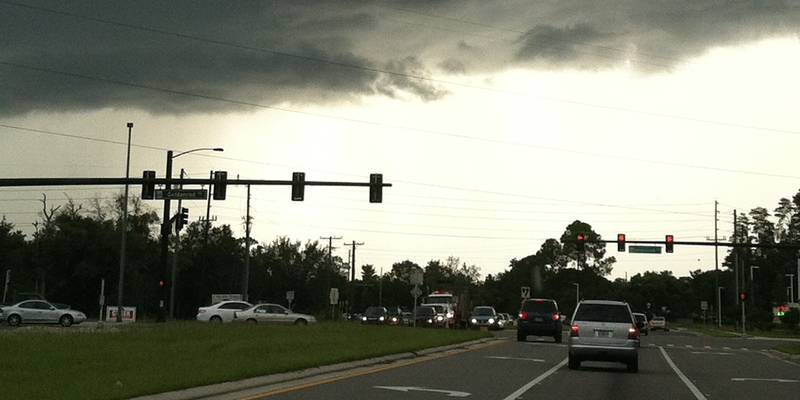
Rainy Day Driving and Rainy season is upon us, my friends. Right now, in fact, the sun is a hot commodity in Tampa Bay. If my house had solar panels, I would surely be out of luck.
Every year about this time, when the news is slow and television networks have to fill empty slots, reports emerge about driving in Florida’s rain. These reports are vague at best, and edited for nothing more than viewer entertainment, with references to “Florida drivers say” this and “Florida Highway Patrol recommends” that. Let’s cut to the chase, shall we? What does FLORIDA LAW have to say?
Now we see the light
Yes, folks, that’s right. I’m channeling Bob Marley’s “Get Up, Stand Up” as I type this. Sure enough, Florida Law, specifically, Florida Statute §316.217(1)(b) actually states that “Every vehicle operated upon a highway within this state shall display lighted lamps and illuminating devices . . . under the following conditions: . . . During any rain, smoke or fog . . .”
From a liability perspective, you do not want to give law enforcement, or an insurance company, an opportunity to apportion blame to you for an accident caused by someone else simply because you failed to turn your headlights on in the rain. Pay attention to your vehicle’s settings to ensure that, if you have auto-powered headlamps, they actually engage in the rain. As we all know, it is quite possible here to have a nice, bright rain shower, and typically auto-powered headlamps require low-light situations in order to auto-illuminate.
Nobody likes a flasher while driving
As a native to the Tampa Bay area, I know that nothing screams “Welcome to Florida!” like the image of a barely-there, drizzling rain on Interstate 75 and about a thousand vehicles driving 20 miles per hour with emergency flashers on. In the past week I have seen more news stories about this particular issue than normal so I took to the books. What does Florida Law say? It is, in fact, very clear on the topic. Florida Statute §316.2397(7)(a) states that “Flashing lights are prohibited on vehicles except . . . to indicate that the vehicle is lawfully stopped or disabled upon the highway. . .”
It’s pretty simple, really. If the rain is hard enough that you feel the uncontrollable impulse to flare up those flashers, pull over. Lawfully, and carefully, stop your vehicle on the side of the road. Otherwise, you are creating a hazard for yourself and for other drivers on the road.
What's the hurry?
Every time I meet with a new client, I either ask or review the crash report for an indication as to what the weather was like at the time of the crash. Was it raining? Dark? Cloudy? Foggy? Aside from helping me to tell a great story to a jury about a “dark and dreary night,” there really is a purpose for my question. Depending on the answer, I am able to create an almost automatic presumption of liability if the alleged at-fault driver’s speed was at or above the posted speed limit in a heavy rain or other severe weather condition.
Florida law states that “No person shall drive a vehicle on a highway at a speed greater than is reasonable and prudent under the conditions and having regard to the actual and potential hazards then existing . . .The driver of every vehicle shall . . . drive at an appropriately reduced speed when . . . any special hazard exists with respect to pedestrians or other traffic or by reason of weather or highway conditions. . .” See Fla. Stat. §316.183
The next time you’re driving in Florida’s rain, or the next time you hear Bob Marley on the radio, remember some of what you’ve learned. Play it safe – let’s be honest, after all: there is no reason not to slow down, turn your lights on, and pull over if you’re too unsure to drive in a storm. We shouldn’t need laws to tell us that!